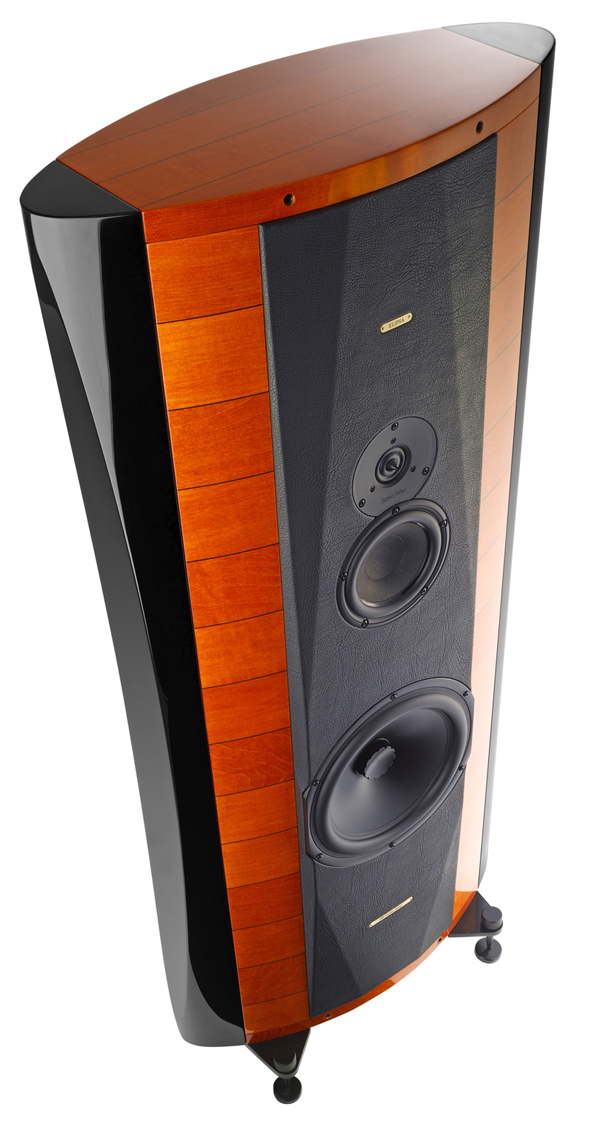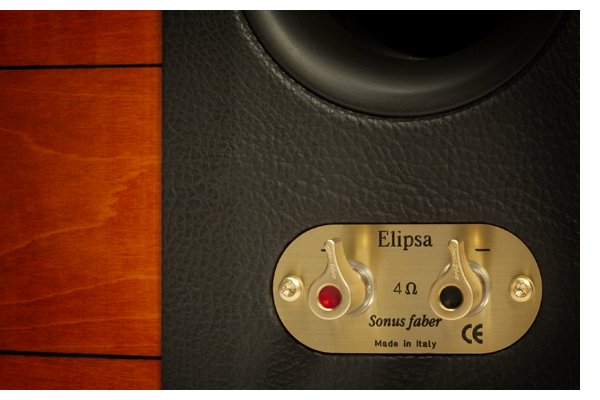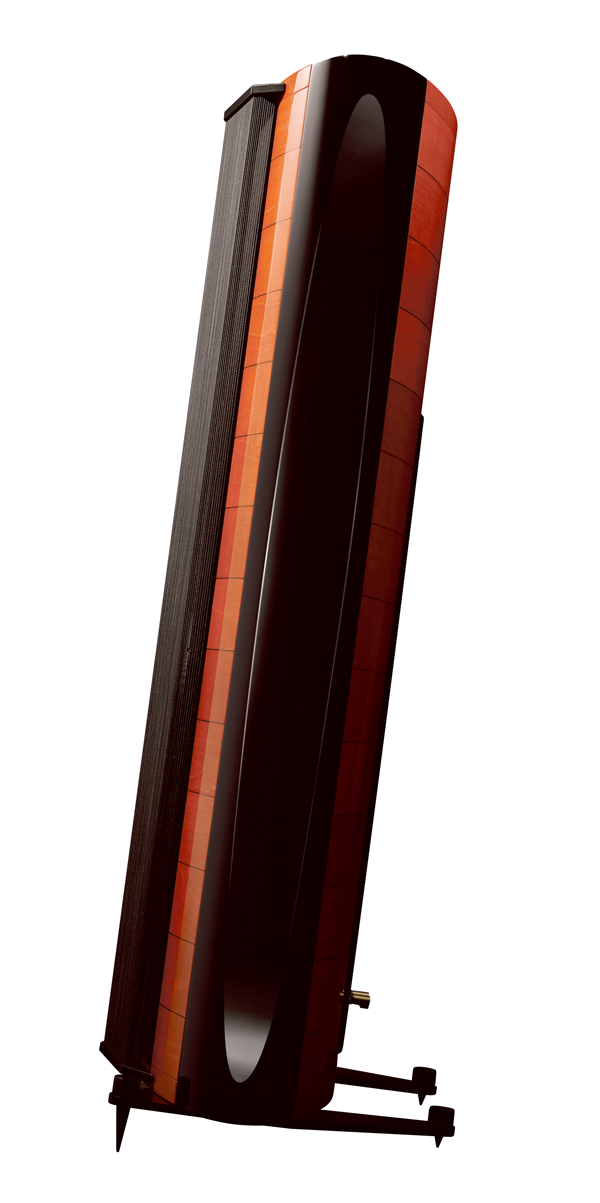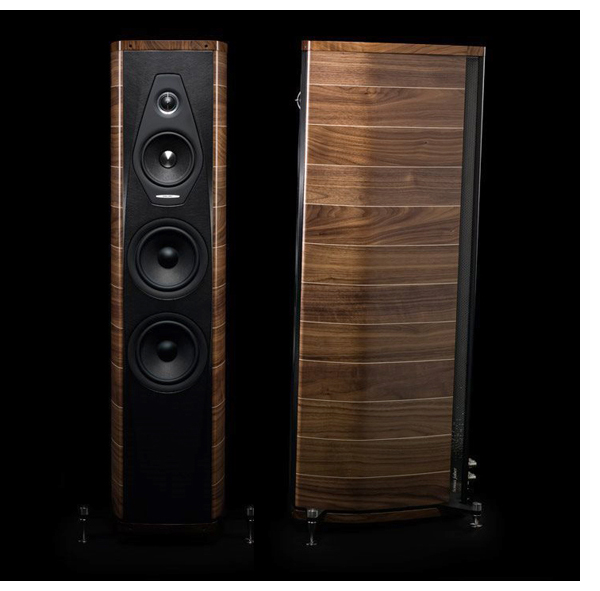 At TONEAudio, we’ve had the pleasure of testing Sonus faber’s flagship Aida speaker ($150,000), the Guinari Evolution ($22,900), and one of their more entry-level offerings, the Venere 3.0 ($3,500). In each of these cases, the sound and build quality represents a high bar for their respective price tags.
At TONEAudio, we’ve had the pleasure of testing Sonus faber’s flagship Aida speaker ($150,000), the Guinari Evolution ($22,900), and one of their more entry-level offerings, the Venere 3.0 ($3,500). In each of these cases, the sound and build quality represents a high bar for their respective price tags.
Not wanting to neglect a middle child in the Sonus faber family, we put the new $13,500 Olympica III floorstanders to the test. The Olympica line of products makes available three models. The Olympica I is a stand-mounted, two-way design. Olympica II is a three-way floorstander with a single bass driver. The Olympica III is the biggest of the bunch with two 7-inch (180mm) bass drivers supplementing the 1.14-inch (29 mm) tweeter and a 5.9-inch (150mm) mid. A center-channel speaker rounds out the lineup should a prospective buyer seek a home theater option.
While there are several great companies producing speaker drivers, and many other speaker manufacturers build cabinets around them, Sonus faber takes a different approach. All their drivers are designed in-house, and each is mated with a cabinet shape which gets the most from it. As a holistic package the Olympica is designed from the ground up with system synergy the priority.
Grace of a figure skater
Made entirely in Italy like Sonus faber’s flagship series, the Olympicas receive the same attention to detail at each level of the build process. Cabinet woodworking is gorgeous, and the resulting products have the appearance of fine furniture. Our sample pair sport the walnut finish. Panels of grain-matched wood curve delicately from the front to the back of the cabinet. Eleven pinstripe-thin maple joints separate the 12 walnut sections on each side of the cabinet, providing an elegant and subtle contrast. For those who prefer a darker colored cabinet, Olympicas are also available with a graphite finish. Even with the greyish-black stain, the wood grain remains beautiful and clearly visible. Regardless of color, several layers of clear lacquer provide a protective and attractive semi-gloss coat.
A top-down view of the leather-topped and backed speaker cabinet reveals a uniquely engineered shape to minimize cabinet reflections. For lack of a better descriptor, it’s an angled teardrop shape with the rounder edge toward the front and the point out the back. The rear portion is asymmetrical with a bit more swoop to one side. This configuration facilitates the addition of Sonus faber’s unique perforated port design on one rear edge. Unlike most small and round bass ports, the Olympica sports a two-inch wide metal-grated port that extends the full length of the speaker. Gracing the cabinet base, a metal four-point outrigger configuration creates additional stability for the narrow towers. Tightening and loosening the spike height facilitates leveling so the speakers keep all four tiny feet firmly anchored to the floor.
Even the metal speaker cable binding posts offer a unique design. With a teardrop profile that mirrors the speaker shape, it’s easy to get a good grip on the posts and tighten them firmly by hand. Dual posts allow for bi-wiring or bi-amplification, and an included, stamped-metal jumper connects the two. The sum of all these parts assigns the Olympica III dimensions of 43.8 inches (1114 cm) in height, 10.25 inches (260mm) across the widest part of the cabinet, and a 16.25-inch (406mm) depth.
Warming up
Speakers are always a tricky piece of equipment to review because each speaker interacts a little differently with a listening space. After a few hours of scooting them around the room in small increments left, right, backward, forward and with varying degrees of toe-in, they finally landed in a location I marked immediately with painter’s tape. To facilitate the process, the Olympica manual suggests some sample speaker and listening seat placement suggestions. These ideas do offer a good starting point for your quest. While the placement process remains a little tedious, these speakers will reward you for the effort.
The aforementioned speaker port can aim to the outsides or insides of the speaker pair since there’s no specific left and right speaker configuration. Trying the ports to the outside first, then swapping the speakers to aim the ports toward the space between speakers, I find the latter configuration offers best sound in my room. Owners should try both and decide for themselves what sounds best to them. Once in place, the Olympicas reveal all they are capable of. And they have a lot of capability.
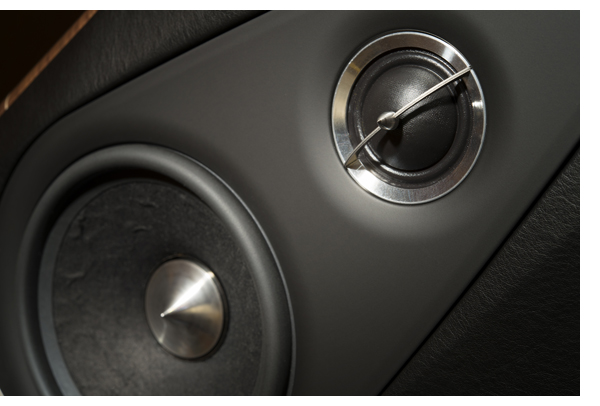
The Decathalon
Decathletes are like the Swiss Army knives of the sporting world. They must do very well at ten different events in order to win. Of course, each individual will have his or her own weaknesses and strengths to bring to the table. Like these athletes, the Sonus faber Olympicas perform very well regardless of the musical genre or source material. In some cases, they truly excel as a reference.
For instance, once the speakers are placed optimally, the sound-staging ability defies expectations. First, the speakers draw no particular attention to their physical location. Sound floats around them without bunching up around the speakers or at the midpoint between them. Second, musical elements of my favorite songs, panned to the extreme left and right, wrap far into the room and sometimes even startle me with their reach toward the rear of the room. Hooverphonic’s “One Way Ride” offers the illusion of movement as some synthesized tones ping-pong back and forth. With the Sonus fabers, sound transits far beyond the speakers themselves as if it somehow broke free of any barriers and traveled at will. My Piega P-10 reference speakers are no slouch in this characteristic, but the Olympicas exceed them by a significant margin.
Sonus faber’s specifications for these speakers indicate a frequency response of 20kHz down to 35Hz – not quite full range, but close to it. When listening, I long occasionally for the feeling of extremely low and heavy bass on tracks like “Substitute for Love” from Madonna’s Ray of Light album. But honestly, I have little non-electronic music in my collection that delves that deep. For most of the music I enjoy, the subterranean bass extension is not missed. The rest of the Olympica bass spectrum proves excellent. There’s no shortage of rumble in the sofa and floor, and the level of tight, tuneful tangibility projected from the Olympicas is marvelous. On the opposite end of the audio spectrum, highs, too are very well extended but not hot in the mix. Bell strikes, like those on Ben Harper’s “Alone,” have a tuneful decay that reverberates so long that – like fossil dating – a listener almost needs to define it by a half-life.
Vocals and instruments with frequencies residing in the middle of the spectrum are never neglected in favor of the extremes. Unlike my reference speakers with a ribbon tweeter and midrange, the traditional cone shape of the Olympicas offers a slightly more tangible presence. As with the ribbons, sound remains natural, but Sonus faber drivers add a degree of palpability and up-close sense of the musical performance. The album Perennial Favorites from the Squirrel Nut Zippers represents an interesting challenge for speakers. With multiple vocals, percussion, strings, piano, harp, a horn section, and many other instruments spread across the stage and layered on top of one another, there’s potential for a sonically muddled mess. The Olympicas manage to sort out all that information, across a wide dynamic range, to present each individual element with a convincing illusion of a live performance.
Final score
There’s no such thing as a best speaker. Upstream component synergy, interaction with the room, music genre, and a listener’s personal sonic preferences all weigh into the equation. In my case, I knew a day would come when a set of visiting speakers would unseat my current reference at a price point I can manage. Apparently, that day has come.
Through the Olympicas, there’s only one real downside for me: I’m truncating the lowest bass frequencies. However, other positive characteristics outweigh my quibbles. Soundstaging prowess, palpability, and pure musical enjoyment in my listening space remain top-notch though the Olympicas. There are certainly speakers out there – including Sonus faber’s own flagship designs – which can reproduce full frequency response, a bit more close-to-the-action musical detail, and perhaps more overall sonic heft. However, they will likely cost significantly more.
The Sonus faber Olympica IIIs are marvelous speakers. At $13,500 per pair, they should be. However, there’s a lot to consider as part of that price tag. First, the build quality and finish are stellar – more like a piece of carefully rendered artwork than a speaker. Secondly, a lot of research and development went into their design, including the creation of in-house drivers. Finally, this package’s performance in my listening room exceeds that of some more expensive speakers which have visited. For those like me who value their stereo more than their car, the Olympica III speakers are worth saving for.
If you are investing in speakers to live with for a long time, and this price range is within your reach, be sure to audition the Olympica III. Perhaps like me, you’ll find they are speakers to long for. I’m purchasing the demo pair.
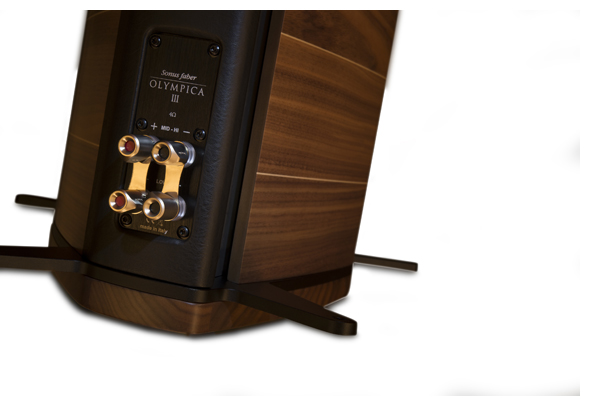
Additional Listening
by Jeff Dorgay
Sonus faber’s $120,000-a-pair Aida is one of the most breathtaking speakers I’ve had the pleasure to spend time with, but like my GamuT S9s or the equally enticing Focal Grande Utopia EM, all of these speakers are out of reach for most audiophiles. Yet after listening to the Olympica IIIs for a month before handing them off to Rob Johnson, it’s very exciting to see just how much of the Aida special sauce is present in these speakers at a much more affordable price. Yes, yes, I know we’ll get all kinds of flak for saying “affordable” and “$13.5k a pair” in the same sentence, but it’s all relative. I know plenty of people that have spent way more than this on a motorcycle, jet ski, wristwatch or a Leica M and a couple of lenses. If you love music, these speakers aren’t out of reach for a decent number of people and the pleasure they bring is well worth the asking price.
Best of all, these speakers perform well with a wide range of amplification, so if you have a modest system and are looking at these as your ultimate speaker that you will buy now and upgrade electronics around as you go, consider this – they sound awesome with a 35 watt per channel PrimaLuna integrated or a Rega Brio-R. Their 90dB/1 watt sensitivity allows even modest amplifiers enough headroom to fill a room with sound.
If you were listening to something like Crosby, Stills and Nash, or your favorite solo female vocalist, you might even be challenged to hear the difference between the $120k/pair Aida and the Olympica. All the major attributes of the flagship speaker are here in spades.
For this price, you should expect great sonics, and the Olympicas deliver. Yet they also manage to be perfect examples of industrial art as well, with no part of their design or construction less than exquisite, and that’s what makes the Olympica shine above every other speaker I’ve spent time with at this price, save Focal’s Diablo Utopia. This is a product you’ll love to look at and have as part of your life, even when not playing music!
I am thrilled to grant the Sonus faber Olympica III speakers one of our Exceptional Value Awards for 2014. They are certainly a personal favorite.
Sonus faber Olympica III Speakers
MSRP: $13,500
PERIPHERALS
| Speakers | Piega P10 |
| Amplifier | Burmester 911 Mk3 |
| Preamplifier | Coffman Labs G1-A |
| Analog | SME 10 Dynavector 17D3 |
| Digital | Light Harmonic DaVinci Mac Mini JRiver Media Center 19 |
| Cables | Jena Labs |
| Power | Running Springs Audio Haley Cardas/RSA Mongoose Power Cords |











